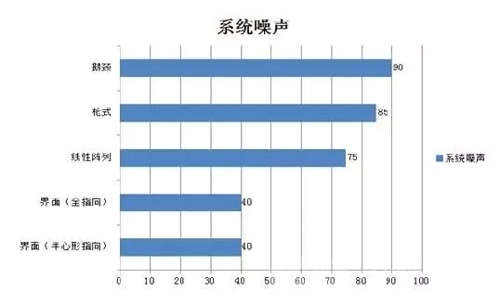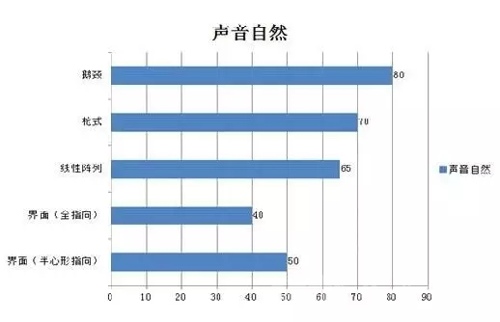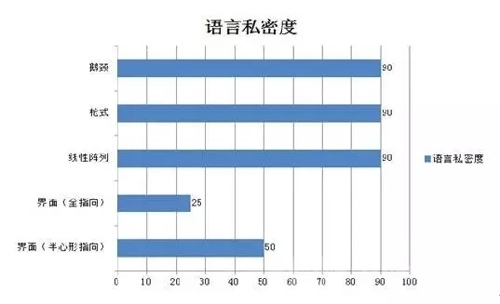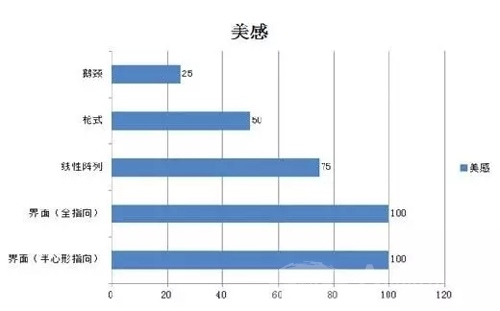“Which conference room microphone is best?†is a very short question, but it is not so easy to answer.
There are a number of terms in the technical documentation and a description of the pickup mode, the number of decibels, and the frequency response. However, these parameters do not take into account environmental factors. If you are not an audio expert, these parameters barely give you an idea of ​​how a particular type of conference room microphone will perform in your conference environment.

Chart showing the difference in performance of conference microphones
We created some charts for six user-based microphone performances (environmental noise immunity, system noise, natural sound, freedom of movement, language privacy, aesthetics), and scored qualitative points for the most common types of conference room microphones. .
The microphone types include:
â–ª Gooseneck microphone feels gun microphone feels linear array microphone feels omnidirectional interface microphone feels half heart-shaped pointing interface microphone
6 performances of conference room microphones
Aside from all the puzzling technical jargon, let's explain the six characteristics of the conference room microphone from the user's point of view.
1. Environmental noise immunity
Honestly, if you listen to the ambient noise in the conference room with headphones, you will be surprised that there is so much noise: paper rustling, chair movement, pen drop, coffee spilling... air conditioner and projector fan are not be quiet.
If the conference room microphone can accurately pick up the speaker's voice and ignore all other noise, the speech intelligibility in the conference room will be greatly improved.
Be aware that this is especially important for conferences with simultaneous interpretation. If your microphone system picks up too much room noise, the translators will be driven crazy and their work will be difficult.

2. System noise
In addition to ambient noise, the system also produces noise. Every electronic circuit produces noise, just a little more. The ability of the conferencing system to handle system noise depends on the type of microphone, the design of the circuit, and the quality of the components used.
It is important to know that the more noise there is, the worse the hearing experience is.

3. Sound naturally
A carefully selected conference room microphone system enhances speech intelligibility, making meetings easier and less annoying. Participants no longer need to improve their voices, so that people sitting across the conference table can hear their words.
However, if the meeting time is long, it is also required that the sound coming out of the system must sound natural and balanced. High-frequency sounds are well controlled and the frequency response is uniform, while low-frequency sounds should sound warm but not excessive. At the same time, it is impossible to pick up too much reverberation caused by the acoustic environment of the room.
A system with unnatural sounds will quickly make the listener feel unpleasant and cause hearing fatigue.

4. Freedom of movement
What happens if the speaker turns to the person sitting next to him while speaking? If he rises on the spot, stand up from his seat and continue to speak? If the speaker is very relaxed, sitting back against the back of the chair?
The conference room microphone must be able to handle all of these situations: the distance between the speaker and the microphone has changed, and the orientation of his speech has changed. Some types of conference room microphones handle these changing conditions more strongly than other microphones.

5. Language privacy
This is a conference room with a microphone. Also need to consider language privacy?
In fact, if you are listening to someone's speech and suddenly hear the voice of someone next to him and others, this is very annoying. You can certainly imagine that this is also a very embarrassing situation.
The directionality of the microphone largely determines the degree of "separation" between the speaker's voice and all other sounds.

6. Aesthetics
Although everyone's perception of beauty is different, there is a fact that some types of conference microphones are more abrupt than others. Those less conspicuous microphones will be less rewarded for environmental noise picking and language privacy, and those that are more abrupt and conspicuous will perform better in these areas.

As you can see, there is no one-size-fits-all answer to the question of which microphone is best. It depends on the specific application, and your microphone experience is more important to you.
However, after understanding the above, with the chart content, you will be better able to evaluate which conference microphone best suits your application needs and which ones you should avoid.
60FT Monopole Tower
Product Description
Available height:5-80m
Electric pressure:10kv--550kv
Material:Q345B/A572,minimum yield strength>=345MPA,
Q235B/A36,minimum yield strength>=235MPA
Galvanized:Hot dip galvanization,thickness is>=12um
Delivery lead time:30 days after receiving 30% deposit
Lifetime:Minimum 25 years
Structure:Overlap connection/Flange connection
Galvanizing standard:EN ISO 146,ASTM/A123
Manufacturing and workmanship:BS449 or AISC
Welding standard:BSEN287,BSEN288 or equivalent
Telecommunication Monopole,Palm Tree Monopole,Supply Power Transmission Monopole,60FT Monopole
YIXING FUTAO METAL STRUCTURAL UNIT CO.,LTD( YIXING HONGSHENGYUAN ELECTRIC POWER FACILITIES CO.,LTD.) , https://www.chinasteelpole.com